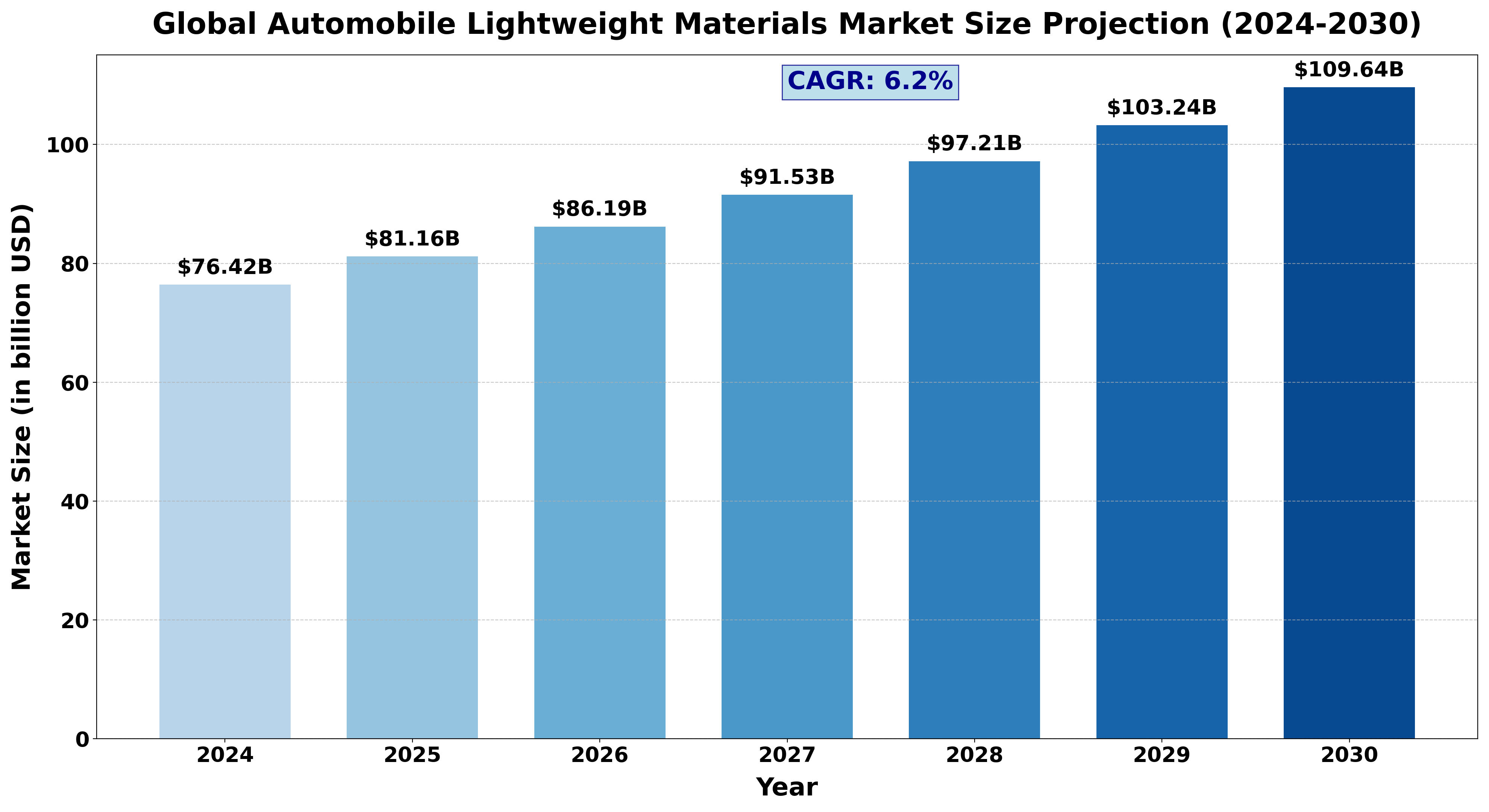TOP CATEGORY: Chemicals & Materials | Life Sciences | Banking & Finance | ICT Media

Download Report PDF Instantly
Report overview
The global Automobile Lightweight Materials market size was valued at US$ 76.42 billion in 2024 and is projected to reach US$ 109.64 billion by 2030, at a CAGR of 6.2% during the forecast period 2024-2030.
The United States Automobile Lightweight Materials market size was valued at US$ 18.76 billion in 2024 and is projected US$ 26.23 billion by 2030, at a CAGR of 5.7% during the forecast period 2024-2030.
Automobile Lightweight Materials are advanced materials used in vehicle manufacturing to reduce weight, improve fuel efficiency, and enhance performance, including high-strength steel, aluminum, magnesium, carbon fiber, and polymer composites.

The global Automobile Lightweight Materials market is experiencing robust growth, driven by stringent fuel efficiency regulations and the shift towards electric vehicles. In 2023, total consumption reached 18.5 million metric tons, with aluminum accounting for 40% of market volume. The carbon fiber reinforced plastics segment is the fastest-growing at 9.5% annually.
The market saw a 25% increase in demand for ultra-high-strength steel in 2023, reflecting the balance between weight reduction and cost-effectiveness. Electric vehicle-specific lightweight materials are growing at 12% annually. Europe leads with a 35% market share due to strict emissions standards, while Asia Pacific is the fastest-growing region at 7.5% CAGR. The industry is focusing on developing next-generation composites, with a 30% increase in R&D investments for nano-engineered materials. There's also a growing trend towards circular economy principles, with a 40% increase in investments for recycling and reusing automotive lightweight materials.
Report Overview
Automobile lightweight materials play an important role in boosting the fuel economy of automobiles.
This report provides a deep insight into the global Automobile Lightweight Materials market covering all its essential aspects. This ranges from a macro overview of the market to micro details of the market size, competitive landscape, development trend, niche market, key market drivers and challenges, SWOT analysis, value chain analysis, etc.
The analysis helps the reader to shape the competition within the industries and strategies for the competitive environment to enhance the potential profit. Furthermore, it provides a simple framework for evaluating and accessing the position of the business organization. The report structure also focuses on the competitive landscape of the Global Automobile Lightweight Materials Market, this report introduces in detail the market share, market performance, product situation, operation situation, etc. of the main players, which helps the readers in the industry to identify the main competitors and deeply understand the competition pattern of the market.
In a word, this report is a must-read for industry players, investors, researchers, consultants, business strategists, and all those who have any kind of stake or are planning to foray into the Automobile Lightweight Materials market in any manner.
Global Automobile Lightweight Materials Market: Market Segmentation Analysis
The research report includes specific segments by region (country), manufacturers, Type, and Application. Market segmentation creates subsets of a market based on product type, end-user or application, Geographic, and other factors. By understanding the market segments, the decision-maker can leverage this targeting in the product, sales, and marketing strategies. Market segments can power your product development cycles by informing how you create product offerings for different segments.
Key Company